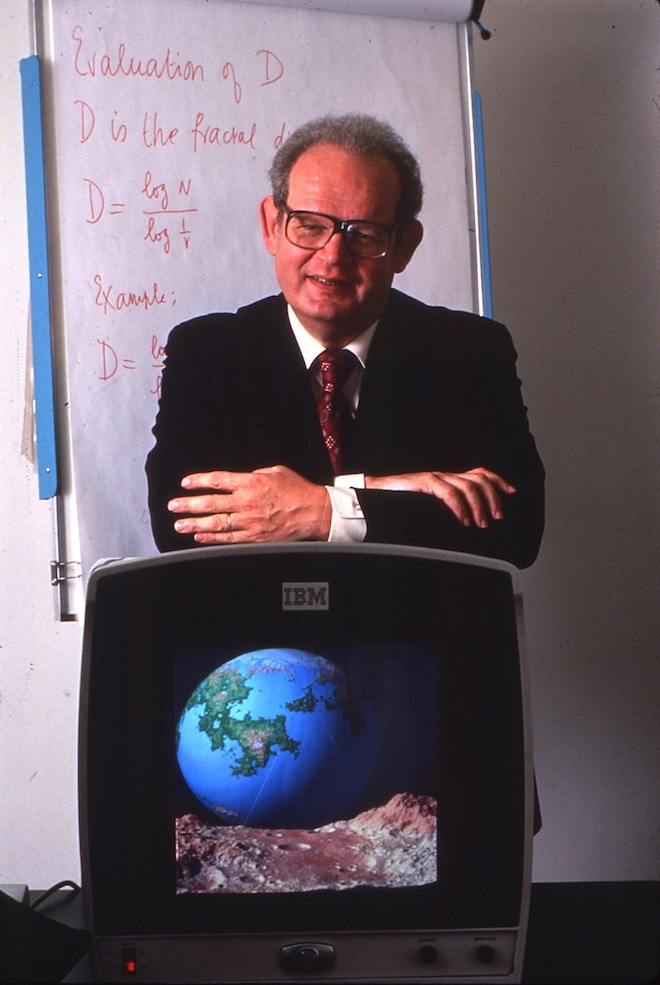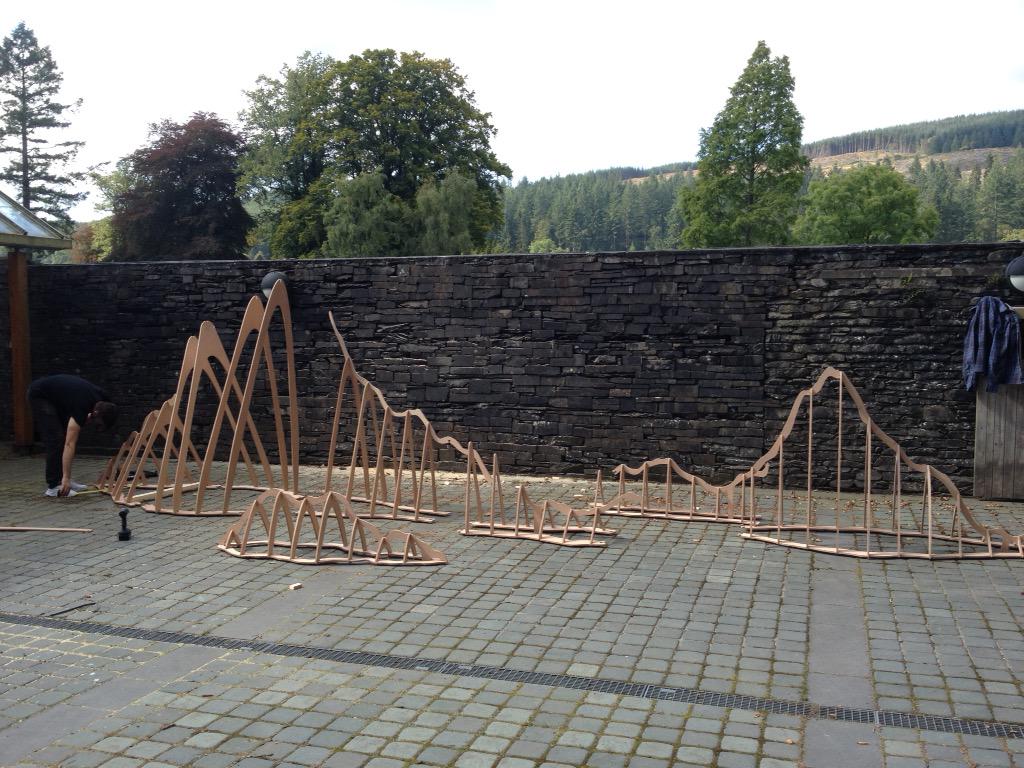Peak Simulator / The Inspiration
Sun 20 Sep 2015In the early eighties the film industry began to explore computer generated imagery being developed by computer scientists and in 1982 a paper titled “Computer Renderings of Stochastic Models’ was published by Alain Fournier, Don Fussel and Loren Carpenter. In it the scholars describe naturalistic terrain contour generating algorithms, based on the fractals developed earlier by the mathematician and scientist, Benoit Mandelbrot. These computational techniques were based on simple recursive equations that generated complexity with minimal effort.
The first film to adopt their strategy was Star Trek 2: The Wrath of Khan in 1986. See below:
What does the algorithm do?
The earliest and simplest landscape shaping algorithms is now known as the Midpoint Division algorithm. It draws a line and finds the midpoint, offsetting the shape randomly but proportionally to the new lengths of the lines. It recursively does this, increasing the line in complexity. Since the displacements are always proportional to the reduction in the size, the image is described as self-similar at every scale; this is the basis of fractals. This algorithm produces what looks like a ridgeline and what we can be perceived as a landscape shape.

Manufacturing Peak Simulator
When Matthew Plummer-Fernandez started developing Peak Simulator he used CNC machine fabrication so we could replicate the algorithm on scale and through computational methods. It was then coated in film to create the hyper-real CGI effect in situ reflecting the natural light. The opaque colour also became a canvas for any natural texture to be rendered on top of it.
Additional Links
Recent Journals
- Introducing Commons // Keiken and Jazmin Morris
- Introducing our Creative Associates programme
- Reflections on the Associate Board Member Programme
- The Future of Arts Governance
- Rendering our virtual, net and digital discourses
- Announcing a new partnership between AND and the School of Digital Arts
- Impossible Perspectives 2024
- AND’s new Board Members and Associate Board Members
- Introducing AND’s new Directors
Other Journals
-
2025
-
2024
-
2023
-
2022
-
2021
-
2020
-
2019
-
2018
-
2017
-
2016
-
2015
-
2014
-
2013
-
2012
-
2011





